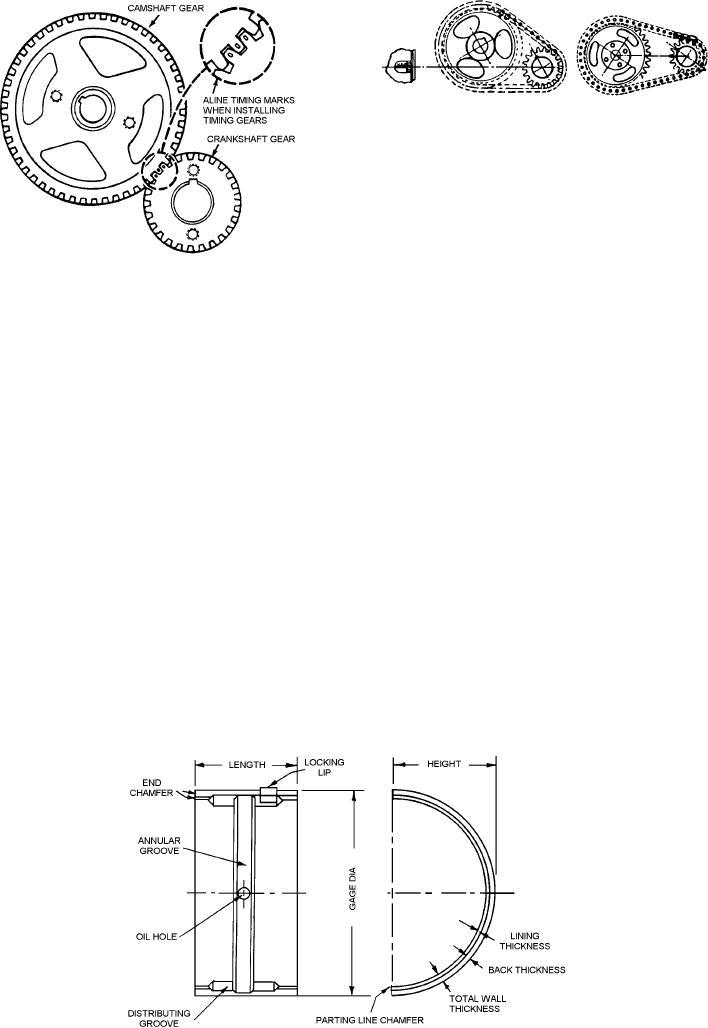
ASf03057
Figure 3-57.--Methods of valve timing with chain drive.
sprockets, as the case may be, of the camshaft and
crankshaft are keyed in position so that they cannot slip.
Since they are keyed to their respective shafts, they can
be replaced if they become worn or noisy.
With directly driven timing gears (fig. 3-56), one
gear usually has a mark on two adjacent teeth and the
ASf03056
Figure 3-56.--Timing gears and their markings.
other a mark on only one tooth. To time the valves
properly, it is necessary only to mesh the gears so that
Following the recommended procedure, adjust the
the two marked teeth of one gear straddle the single
valves to meet the manufacturer's specification. Never
marked tooth of the other.
attempt to adjust valves with solid lifters by "ear." If,
In the case of chain-driven sprockets, the correct
after adjusting the valves with a gauge, there is still
timing may be obtained by having a certain number of
excessive valve-lash noise, do not attempt to tighten the
chain-link teeth between the marks, or by lining up the
adjustment until the noise disappears. To do so may
marks with a straightedge, as shown in figure 3-57. In
result in severe damage to the engine. When valves are
the latter method, the position of the piston is
excessively noisy after adjustment, the components of
determined by markings on the engine flywheel. Some
the valve operating mechanisms should be dis-
engines have timing marks on the crankshaft fan pulley
assembled and inspected for abnormal wear or faulty
if no opening is provided in the flywheel housing.
components.
Always check the manufacturer's instructions when
On any engine on which valve adjustments have
you are in doubt about the method of timing the engine
been made, be sure that the adjustment locks are tight
you are overhauling.
and that the valve mechanism covers and gaskets are in
place and securely fastened to prevent oil leaks.
Engine Bearings
Timing Gears (Gear Trains)
Bearings are installed in an engine where there is
relative motion between parts. Engine bearings are
Timing gears keep the crankshaft and camshaft
called sleeve bearings because they are in the shape of a
turning in proper relation to one another so that the
sleeve that fits around the rotating journal or shaft.
valves open and close at the proper time. In some
Connecting rod or crankshaft (also called main)
engines, sprockets and chains are used. The gears or
bearings are of the split or half type (fig. 3-58). On main
ASf03058
Figure 3-58.--Typical sleeve-type bearing half.
3-39

